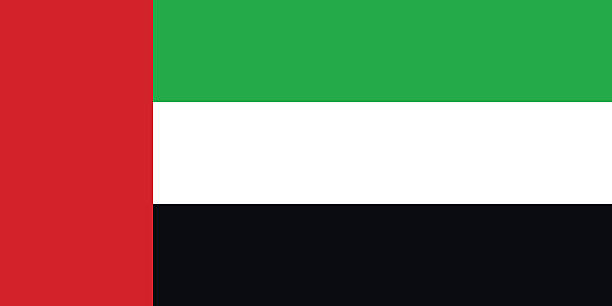Commodities Trading Guide
Trading Academy: Commodities Trading Guide
Introduction to Commodities Trading
Commodities are basic goods that are interchangeable with other goods of the same type. They are often the raw materials used in the production of other goods or services. Commodities trading involves buying and selling these raw materials in various forms, such as agricultural products, metals, and energy sources.
Commodities can be traded directly through spot markets or via derivatives like futures contracts, which are agreements to buy or sell a commodity at a predetermined price at a specified time in the future. Commodities trading can offer opportunities for portfolio diversification and potential profits from price movements in global markets.
Types of Commodities
Commodities are typically divided into four main categories:
1. Energy: Includes crude oil, natural gas, gasoline, and heating oil.
2. Metals: Includes precious metals like gold and silver, and industrial metals like copper and aluminum.
3. Agricultural: Includes grains like wheat and corn, softs like coffee and sugar, and livestock.
4. Others: Includes commodities like cotton, rubber, and lumber.
Understanding the Commodities Market
The commodities market is influenced by various factors such as supply and demand, geopolitical events, weather conditions, and economic data. Unlike stocks and bonds, commodities are physical assets, and their prices can be highly volatile.
Key Concepts:
- Futures Contracts: Agreements to buy or sell a commodity at a specific price on a specific future date.
- Spot Price: The current market price at which a commodity can be bought or sold for immediate delivery.
- Hedging: A strategy used by producers and consumers of commodities to protect against price fluctuations.
- Contango and Backwardation: Terms that describe the shape of the futures curve. Contango occurs when futures prices are higher than the spot price, while backwardation occurs when futures prices are lower than the spot price.
How to Trade Commodities
1. Choose a Commodity Broker: To trade commodities, you'll need to open an account with a broker that offers access to commodity markets. Evaluate brokers based on their fees, platform features, and the range of commodities available for trading.
2. Select a Commodity to Trade: Decide which commodity you want to trade based on your market analysis and understanding. Consider factors such as market trends, global demand, and seasonal influences.
3. Place an Order: You can trade commodities through spot contracts or futures contracts. Orders can be placed through your broker:
- Market Order: Buy or sell immediately at the current market price.
- Limit Order: Buy or sell at a specific price or better.
- Stop Order: Execute a trade once the price reaches a predetermined level.
Example Trade – Commodity:
Suppose you're interested in trading Crude Oil (WTI).
- Research: You analyze global oil production reports and geopolitical tensions in oil-producing regions, leading you to believe that crude oil prices will rise.
- Placing an Order: The current spot price of WTI Crude Oil is $70 per barrel. You place a futures contract order to buy 1 contract (representing 1,000 barrels) at $70.
- Execution: Your order is executed, and you now hold a long position in crude oil. If the price rises to $75 per barrel, you can sell the contract for a profit.
- Monitoring: You keep an eye on OPEC meetings, U.S. crude oil inventory reports, and global economic data that could impact oil prices.
Commodities Trading Strategies
1. Trend Following: This strategy involves identifying and following the prevailing trend in commodity prices. Traders use technical analysis tools like moving averages and trendlines to determine entry and exit points.
Example: You notice a strong uptrend in Gold prices due to increased demand for safe-haven assets. You enter a long position in gold futures, riding the trend until signs of reversal appear.
2. Range Trading: In this strategy, traders buy commodities at the lower end of a defined price range and sell at the higher end. This works well in markets where prices move within a consistent range.
Example: You identify a range between $3 and $3.50 per pound for Copper. You buy when the price approaches $3 and sell when it nears $3.50, repeating this process as long as the range holds.
3. Seasonal Trading: Certain commodities exhibit seasonal patterns due to weather, harvest cycles, or demand fluctuations. Traders capitalize on these patterns by buying or selling based on the season.
Example: You know that Natural Gas prices typically rise in the winter due to increased heating demand. You buy natural gas futures in the fall and sell in the winter as prices peak.
4. Hedging: This strategy is commonly used by producers and consumers of commodities to lock in prices and reduce the risk of adverse price movements. While not primarily for profit, hedging can provide stability.
Example: A farmer expects a bumper crop of Wheat and is concerned that prices might fall by the time the harvest is ready. To hedge against this risk, the farmer sells wheat futures contracts at the current higher price, ensuring a stable income despite potential price drops.
Risks and Considerations
Trading commodities involves several risks:
- Price Volatility: Commodity prices can be highly volatile, influenced by factors like supply disruptions, geopolitical events, and economic data.
- Leverage Risk: Trading commodities often involves the use of leverage, which can amplify both gains and losses.
- Liquidity Risk: Some commodities may have lower trading volumes, leading to wider spreads and difficulty in executing trades.
- Market Risk: Unexpected events, such as natural disasters or political instability, can significantly impact commodity prices.
Conclusion
Commodities trading offers opportunities for profit, diversification, and hedging against inflation. However, it also comes with unique risks and challenges. Understanding the dynamics of the commodities market, developing a sound strategy, and managing risks are essential for successful trading. Whether you’re interested in energy, metals, or agricultural products, continuous learning and market awareness are key to navigating the world of commodities trading.

